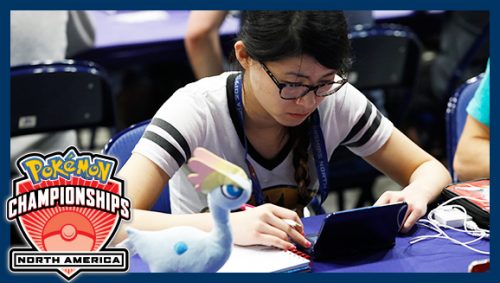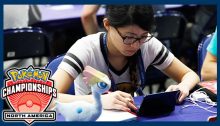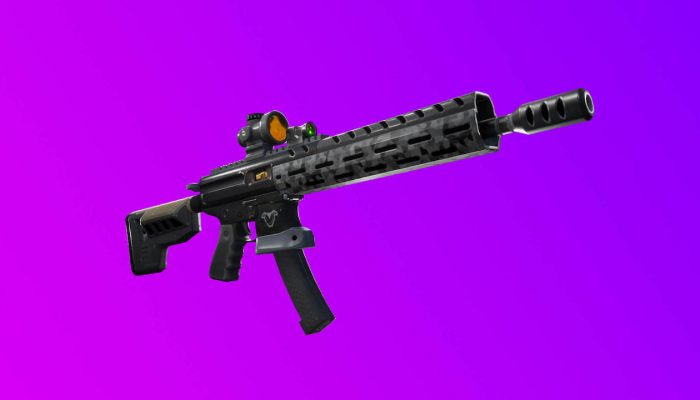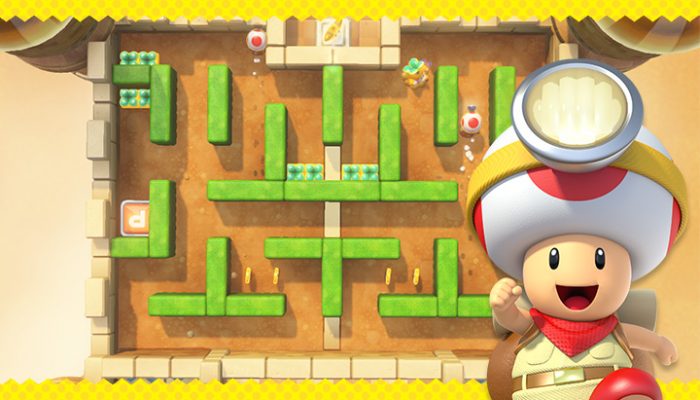 Dragonite, Chansey, and Togedemaru each had their turns wowing the crowd and making lasting memories for Trainers from all over the world.
Dragonite, Chansey, and Togedemaru each had their turns wowing the crowd and making lasting memories for Trainers from all over the world.
☆ NintendObs Weekly – Monday, July 10, 2017 – Sunday, July 16, 2017.

Most Valuable Pokémon from Internationals
The VGC Pokémon North American International Championships featured exciting battles and surprising strategies. Dragonite, Chansey, and Togedemaru each had their turns wowing the crowd and making lasting memories for Trainers from all over the world. And Trainers from Australia showed the rest of the world just how hard they’d been training by taking home the Champion title in all three age divisions.
With the Pokémon World Championships just a few short weeks away, the most successful Pokémon and teams from Indianapolis are sure to be an indication of what we’ll see in Anaheim. Let’s look back on the most important trends in Pokémon Sun and Pokémon Moon tournament battles.
An Intimidating Defense
Clever use of the Intimidate Ability was a common thread connecting many of the top teams in Indianapolis. This is one reason many considered Arcanine to be the top dog in the Pokémon video game field before the competition began, and why it remained standing tall after the final battles in the North American International Championships were completed. Arcanine’s popularity seemed to fade a bit during the first day and a half of play, but it wound up appearing on nine of the ten Masters Division top cut teams—only a team built around Pelipper’s Drizzle Ability chose to forego the formidable Fire type.
Snorlax was so effective in Indianapolis that many Trainers now consider it to be the strongest Pokémon in the format, and support from Arcanine’s Intimidate Ability was key to its success. The Sleeping Pokémon naturally has so much HP that its solid Special Defense makes it nearly impervious to special attacks as soon as it’s released from its Poké Ball. Its vulnerability is its Defense stat, which Trainers patched up with the Intimidate Ability or by teaching their Snorlax Curse. Runner-up Paul Chua even used Ninetales’s Aurora Veil to reduce all the damage Snorlax received while powering up.
The team used by Masters Division Champion Christopher Kan features most of the key optimizations we saw around Snorlax throughout the tournament—a major reason why his team proved to be the most effective. He taught his Snorlax Curse and included both a Gyarados and an Arcanine with the Intimidate Ability on his team, preventing any nightmares for the Sleeping Pokémon. Perhaps even more eye-opening was the team we saw from Quarterfinalist Nick Navarre. He also doubled up on the Intimidate Ability to support his Normal-type Pokémon, but he selected the rogue Chansey instead of Snorlax. The Egg Pokémon has an even more extreme distribution of HP and Defense than Snorlax, but clever use of the Intimidate Ability made it almost impossible to break through those Normal-type behemoths in conventional battles.
Taking an Alternate Route
Trainers who anticipated Snorlax throwing its weight around in Indianapolis cleared their paths by trying to win an unconventional battle against it instead. Rather than trying to breach the Sleeping Pokémon’s hefty defenses with attacking moves, these clever combatants looked to defeat it by using moves like Toxic and Leech Seed that ignore its defensive stats.
Celesteela was an afterthought for most of the season after an impressive showing at the European International Championships back in December, but it burst back into action in a big way in Indianapolis. The Launch Pokémon is easily the sturdiest available Pokémon capable of learning Leech Seed, which can siphon an impressive amount of health from Snorlax’s sizable pool of HP each turn. Celesteela takes little damage from Snorlax’s attacks, and it’s great against the popular Garchomp, too.
Trainers largely stopped including Toxic on their teams after Enosh Shachar popularized Tapu Fini at an early-season North American Regional Championship, but Toxic also made a triumphant return aided by the Water-type Tapu’s relative disappearance. Christopher Kan’s Arcanine, Nick Navarre’s Chansey, and Tyler Miller’s Mudsdale all knew Toxic, enabling their Trainers to grind down the hardier members of their opponents’ teams. The Poison-type status move may even have been the deciding factor in the Masters Division finals—Toxic slowly ground down Paul Chua’s Pokémon long after Christopher’s Arcanine was defeated.
Each of the three Trainers who brought Snorlax to the Masters Division final four leveraged it against Toxic’s effect and other status conditions by teaching it Facade. While Facade doesn’t reduce the damage inflicted by status conditions, it enables Snorlax to get its revenge when it’s Poisoned, Burned, or afflicted with Paralysis by doubling in power. Plus, damage from Facade isn’t reduced like other physical attacks when the Pokémon using it is Burned—a big advantage against Trainers like César Reyes, Sebastian Escalante, and Tyler Miller who taught their Pokémon Will-O-Wisp.
Bulldozing the Competition
One of the most entertaining strategies from Indianapolis featured a combination of the move Bulldoze and a Metagross that held Weakness Policy. Bulldoze is a Ground-type attack that hits each of the other Pokémon on the field like Earthquake, but instead of doing big damage like Earthquake, it reduces the Speed of each affected Pokémon instead.
Bulldoze’s lower damage is an asset for this strategy—Trainers intentionally hit their own Metagross with the supereffective Bulldoze to activate its Weakness Policy, increasing its Attack by two levels. Plus, Metagross’s Speed won’t be lowered along with the opponents’ because of its Clear Body Ability.
The only Trainer to make it to the top cut using this strategy was Nick Navarre, who taught his Buzzwole Bulldoze. Most of the other Trainers we saw use this strategy taught Bulldoze to their Salamence or Arcanine instead—including standout teams from Rajan Bal and Sam Schweitzer.
Other Trainers using Bulldoze weren’t quite able to level the competition this time, but perhaps this strategy will form the foundation of a championship team in Anaheim with more refining.
A Look Back at Day Two
Now that the entire tournament is in the books, let’s revisit some of the most frequently selected Pokémon from Day 2 of the Masters Division competition at the North American International Championships.
Tapu Koko was just as prevalent in the top cut as it was when Day 2 began. Eight of the ten Masters Division top cut teams featured Melemele’s guardian, solidifying its place as top Tapu approaching the Pokémon World Championships. Trainers were split on the item they gave Tapu Koko to hold—both Masters Division finalists elected to give their Tapu Koko Electrium Z, an item we hadn’t seen much at tournaments earlier in the season.
Both the Masters and Senior Division Champions included Porygon2 on their teams. The success of a few teams may obfuscate the fact that the Virtual Pokémon was almost cut out of the Masters Division top cut completely. Despite appearing on more than half of the teams that advanced to Day 2, only three of the final ten teams featured Porygon2.
Kartana’s eleven Day 2 appearances were probably already fewer than most Trainers were expecting, and its two top cut appearances don’t impress much, either. Adding in Celesteela’s three appearances in the top cut and Metagross’s two, eight of the ten top cut teams featured a Steel-type Pokémon. The reduction in Steel-type Pokémon as the tournament progressed was one less obstacle to Snorlax asserting its dominance.
Nihilego didn’t appear frequently enough in Day 2 overall to make the original chart, but notably finished as the only other Pokémon to appear on three or more Masters Division top cut teams. Markus Stadter’s team featured the Grassy Terrain-focused trio of Tapu Bulu, Nihilego, and Arcanine, while Nils Dunlop and Diego Ferreira featured the Parasite Pokémon in some less conventional team compositions.
Parting Shots
ne of the most exciting parts of the 2017 Video Game Championships has been seeing how many kinds of teams succeeded. Sebastian Escalante’s Persian team, Markus Stadter’s Porygon-Z team, and Sean Bannen’s rain team don’t look much like the teams we profiled earlier in the article, but they each proved nearly as effective. With Sean Bannen’s top-4 finish, a team using the combination of a Pelipper with the Drizzle Ability and a Golduck with the Swift Swim Ability made it to the top cut of each of the four International Championships in the Masters Division.
Don’t forget to check out the teams from the savvy Senior Division, where the rising stars in Pokémon VGC showed off some clever teams. Togedemaru, Silvally, Raichu, Milotic, Aerodactyl, Mandibuzz, and Whimsicott all made it to the top cut only in the Senior Division. You can check out the top-8 Junior Division teams as well, including the team used by Champion Nicholas Kan, younger brother of the Masters Division Champion.
The North American International Championships featured exciting battles that are sure to give contending Trainers much to think about before the Pokémon World Championships. The action in Anaheim will be livestreamed at Pokemon.com/Live from August 18–20, so don’t forget to tune in. And keep checking back to Pokemon.com/Strategy for more Pokémon TCG and video game tournament coverage, tips, and strategy.
Source: Pokémon.
At NintendObserver, the comments are on Discord.
Click on Community to learn more. 🙂
…
And if you’ve already got yours, click on Pokémon Sun & Moon for everything you need to know about the games. 😀




